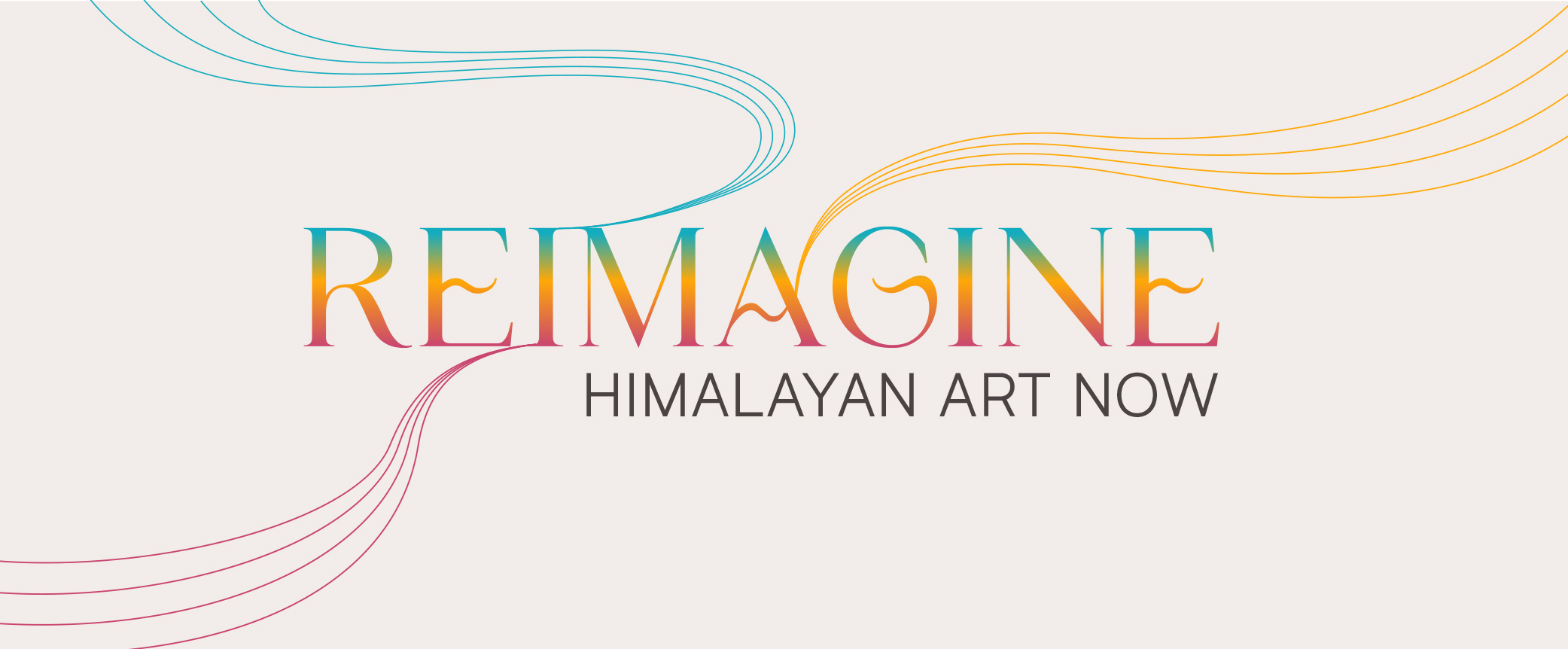
Shushank Shrestha
Reimagine: Himalayan Art Now
March 15–October 6, 2024

LISTEN TO THE ARTIST
ABOUT THE ARTIST
Shushank Shrestha (he/him)
b. 1993, Kathmandu, Nepal; lives and works in Marion, MA
Shushank Shrestha is a ceramic artist from Kathmandu, Nepal, who engages with modern culture through the lens of traditional Nepalese art. Cartoons and animated movies have been a source of inspiration and fantasy for the artist. Such imagery transports the viewer into a magical world, free from everyday stresses, and often conveys emotions or ideas that may be difficult to express through other means.
Shushank Shrestha’s characters reflect his personal journey of transformation and self-discovery, centered on the question of what it means to be human today. He intends to help people revisit the positivity of childhood through his art.
Shushank Shrestha has a MFA in ceramic arts from New York State College of Ceramics at Alfred University. He received his BFA from Kathmandu University School of Arts in 2016, and his work has been exhibited in Nepal, China, France, and the US.
@shushank17
ABOUT THE ARTWORK IN REIMAGINE
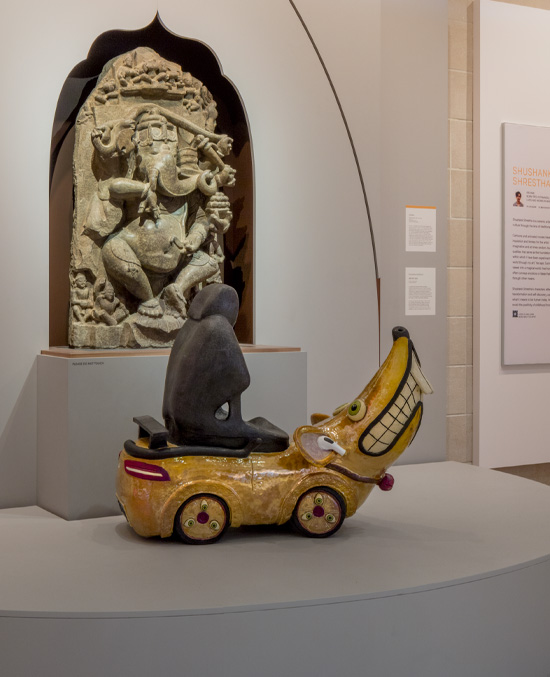
In a playful twist, Shushank Shrestha reimagines Ganesha’s trusty vehicle, the rat, as an Uber, humorously suggesting that even a divine being might require modern conveniences. In dialogue with Uber Rat is the Rubin’s sculpture of Ganesha shown dancing above. With a nod to sustainability, Uber Rat is conceived as a hybrid between a car and a rat/mouse/shrew, much like the hybrid technology that infuses our modern luxury driving experiences.
The artist was inspired by Uber drivers in New York City who multitask with headphones, talking with someone while simultaneously using GPS navigation and even trading stocks. He found it intriguing how technology has transformed culture; even when we are en route to a destination, we seek to accomplish many things at once.
RELATED RUBIN OBJECT
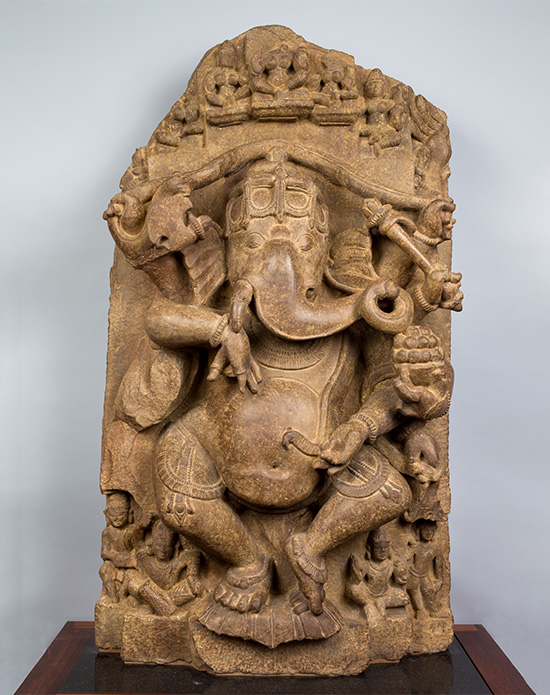
This object from the Rubin Museum’s collection is presented in the Reimagine exhibition in dialogue with Uber Rat, inviting new ways of encountering traditional Himalayan art.
ABOUT THE ARTWORKS IN REIMAGINE
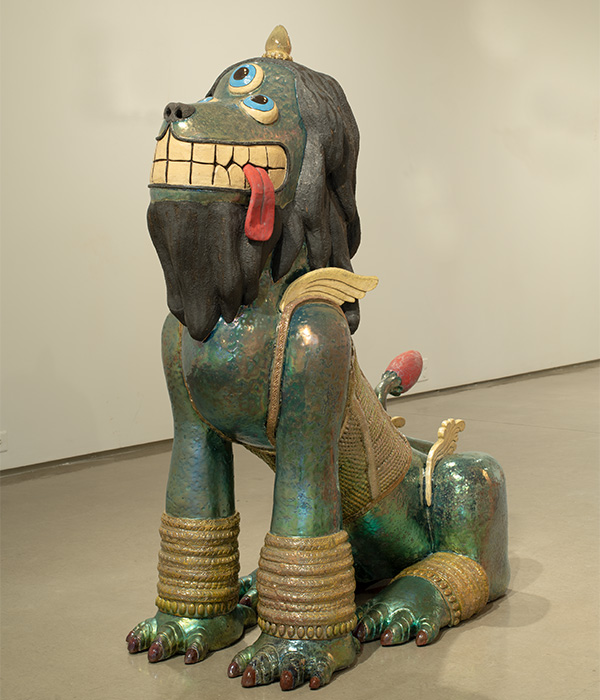
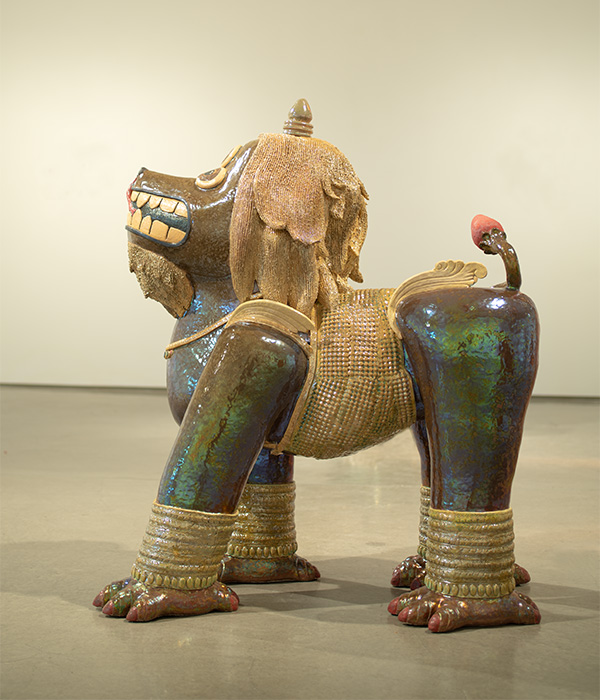
Shushank Shrestha has always been fascinated by the guardian lions that are a common sight in his hometown of Kathmandu and a part of his cultural heritage. These majestic creatures, believed to have mystical protective powers, are installed at entrances of temples, palaces, and monasteries to ward off evil and nonbelievers. These lions draw inspiration from the artist’s dogs, Zinc and Kaolin, the custodians and protectors of his own house, that bring a sense of comfort and reassurance to his family. The lion-dogs have three eyes, representing their higher sense of consciousness, and the pair work in harmony to create a space that is safe, protected, and filled with positive energy.
These sculptures also represent the continuation of foundational artistic techniques in Himalayan art such as building sculptures from clay. Unfired clay, as seen in the Yellow Jambhala displayed nearby in the exhibition, was the most popular material for sculpture in the Himalayas and surrounding areas for centuries. Here Shushank Shrestha applied a vibrant in-glaze lustre of color to the lion-dogs.
RELATED RUBIN OBJECT
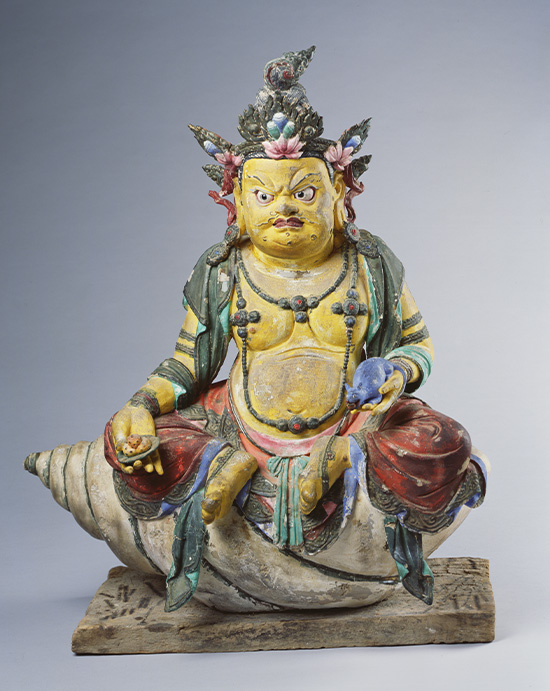
This object from the Rubin Museum’s collection is presented in the Reimagine exhibition in dialogue with Male Guardian Dog and Female Guardian Dog, inviting new ways of encountering traditional Himalayan art.

